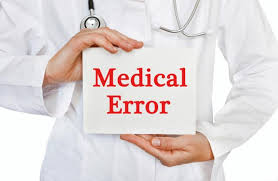When doctors or nurses fail to make the right diagnosis or manage a patient with the appropriate treatment, it can lead to serious complications. Here are 10 potential causes of such complications:
- Delayed or Missed Diagnosis: Failing to diagnose a condition promptly can lead to progression of the disease, making it more difficult to treat and increasing the risk of complications. For example, missing a diagnosis of cancer can result in advanced stages that are harder to treat.
Case Scenario: A 45-year-old woman presents with persistent abdominal pain and weight loss. Despite multiple visits to her primary care physician, she is not referred for further diagnostic tests. Several months later, she is diagnosed with advanced pancreatic cancer, which could have been treated more effectively if detected earlier.
- Inappropriate Medication: Prescribing the wrong medication or incorrect dosages can lead to adverse reactions, drug interactions, and worsening of the underlying condition. For instance, giving a patient with a penicillin allergy penicillin can cause anaphylaxis.
Case Scenario: An elderly patient with a known allergy to penicillin is prescribed amoxicillin for a urinary tract infection. The patient experiences anaphylaxis shortly after taking the medication and requires emergency treatment.
- Inadequate Monitoring: Failure to monitor patients properly can lead to undetected changes in their condition. This is particularly critical in intensive care settings where patients require close monitoring for signs of deterioration.
Case Scenario: A post-surgical patient is not adequately monitored for signs of bleeding or infection. As a result, a significant hemorrhage goes undetected until the patient's condition deteriorates critically, requiring emergency intervention.
- Surgical Errors: Performing surgery on the wrong patient, wrong site, or wrong procedure can result in severe injuries and complications. These errors are often preventable with proper preoperative checks.
Case Scenario: A patient scheduled for a left knee arthroscopy undergoes surgery on the right knee instead due to a preoperative checklist error. The mistake is discovered post-operatively when the patient complains of continued pain in the left knee.
- Infection Control Failures: Not following proper infection control protocols can lead to hospital-acquired infections (HAIs), which can be life-threatening and complicate recovery from the original condition.
Case Scenario: A hospital fails to implement proper hand hygiene and sterilization protocols during a flu season, leading to an outbreak of hospital-acquired influenza among patients and staff.
- Lack of Follow-Up Care: Failing to provide adequate follow-up care after discharge can result in untreated complications or recurrence of the condition. This is especially important for patients with chronic diseases.
Case Scenario: A patient discharged after heart surgery does not receive clear instructions on follow-up care or medication management. As a result, they miss critical follow-up appointments and experience complications such as atrial fibrillation that could have been managed earlier.
- Communication Breakdowns: Poor communication between healthcare providers or between providers and patients can lead to misunderstandings about treatment plans, medication regimens, and follow-up instructions.
Case Scenario: During a shift change in an ICU setting, critical information about a patient's worsening condition is not communicated effectively between nurses. This leads to delayed recognition of sepsis, resulting in organ failure and increased mortality risk.
- Failure to Consider Comorbidities: Ignoring comorbid conditions (other health issues a patient has) can complicate treatment and increase the risk of adverse outcomes. For example, not considering a patient's heart disease when treating another condition could lead to cardiac complications.
Case Scenario: A diabetic patient undergoes elective surgery without proper preoperative evaluation of their glycemic control. Post-operatively, their blood sugar levels spike significantly due to stress and medication interactions, leading to diabetic ketoacidosis.
- Ignoring Patient History: Overlooking important aspects of a patient's medical history, such as allergies or previous surgeries, can result in inappropriate treatments that exacerbate existing conditions.
Case Scenario: A patient with a history of severe allergic reactions to latex undergoes minor surgery without any precautions taken regarding latex exposure. During the procedure, the patient experiences anaphylaxis due to latex exposure from surgical gloves.
- Non-Adherence to Guidelines and Protocols: Deviating from established clinical guidelines and protocols without valid reasons can lead to suboptimal care and increased risk of complications. This includes failing to follow evidence-based practices for diagnosing and treating specific conditions.
Case Scenario: Despite guidelines recommending anticoagulation therapy for patients with atrial fibrillation at high risk for stroke, a physician chooses not to prescribe it based on personal preference rather than evidence-based practice. The patient subsequently experiences a stroke that could have been prevented.
These failures highlight the importance of meticulous attention to detail, thorough communication, adherence to guidelines, and continuous monitoring in healthcare settings. These scenarios underscore the critical importance of accurate diagnosis, appropriate treatment, thorough monitoring, adherence to guidelines, and effective communication in healthcare settings.

